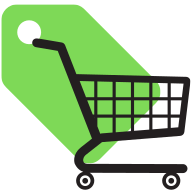How to Improve Cart Abandonment Recovery: Tips for Businesses
Navigating the challenges of cart abandonment can significantly impact a business's bottom line. This article delves into practical recovery strategies, backed by expert insights, to help businesses reclaim lost sales. Learn how to retain customers through every step of their online shopping journey with these proven techniques.
- Use Exit-Intent Pop-ups to Prevent Abandonment
- Personalize Recovery Based on Shopper Behavior
- Streamline Checkout and Build Customer Trust
- Simplify Checkout and Follow Up Empathetically
- Stay Top of Mind Across Multiple Channels
- Implement Dynamic Cart Recalculation and Personalized Emails
- Craft Timely, Personalized Follow-up Messages
- Streamline Checkout and Use Automated Email Series
- Personalize Recovery and Simplify Checkout Process
- Focus on Simplification and Targeted Follow-ups
- Analyze and Streamline Your Checkout Process
- Streamline Checkout and Use Triggered Emails
Use Exit-Intent Pop-ups to Prevent Abandonment
Most businesses still think the best way to recover abandoned carts is by sending a follow-up email with the customer's name and product. That might have worked in 2015. Today? People don't even reply to texts from their closest friends. Why would they act on a sales email buried in their promotions tab?
Here's what I recommend instead: Use exit-intent pop-ups.
When someone's about to leave the page, don't wait. Give them a reason to stay. A small discount, a freebie, or even just a reminder that their item is still waiting. Tools like OptiMonk make it super easy, no coding needed. It's low-cost, real-time, and far more effective than chasing people after they've already left.
It's not about being louder. It's about being timely. You catch people in the moment, not after.
The real problem isn't cart abandonment. It's hesitation. And hesitation lives on the checkout page, not in the inbox. If you can handle it there, you won't need to "recover" anything later.

Personalize Recovery Based on Shopper Behavior
One piece of advice I would give to businesses struggling to reduce their cart abandonment rate and improve recovery is to focus on personalizing the recovery process based on the behavior of the shopper. Too many businesses take a one-size-fits-all approach to abandoned cart emails, which often leads to low engagement and poor recovery rates. By personalizing the messaging and timing of the recovery efforts, businesses can drastically improve their chances of converting abandoned carts into sales.
How Personalization Can Help:
Segment the Audience: Not all abandoners are the same. Segmenting your audience based on their behavior can make your recovery efforts more targeted and effective. For example:
First-time visitors might need a gentler nudge, like offering a small discount or emphasizing the free shipping option.
Returning customers might respond better to a more value-driven message, reminding them of how your product fits their previous purchases or the long-term benefits of your offerings.
Understanding these differences allows you to craft more personalized and relevant recovery emails, rather than sending generic "We miss you!" messages.
Timing Is Key: The timing of your abandoned cart emails can make or break your chances of recovery. Typically, sending an initial email within 30 minutes to 1 hour of the abandonment can be the most effective. This is when the shopper is still thinking about the purchase and the chance of conversion is highest. Additionally, setting up a follow-up email 24 hours later with a more incentive-based offer (e.g., discount, free shipping) can keep your brand on their radar without feeling too pushy.
Dynamic Product Recommendations: Another great way to recover abandoned carts is by showing personalized product recommendations in your emails. If someone abandoned a specific item, show them similar items, or additional accessories that complement the abandoned product. This type of cross-selling can increase the overall order value while giving the shopper more options to choose from.

Streamline Checkout and Build Customer Trust
Customers often abandon shopping carts for several reasons, such as unexpected shipping costs, complicated checkout processes, or doubts about security. In my experience at Design Hero, we've tackled this by focusing on two key areas: user experience and trust-building.
Firstly, we streamline the checkout process. Simplifying navigation, minimizing form fields, and offering guest checkout options can make all the difference. For example, after analyzing cart abandonment on one of our client sites, we cut the checkout process from five steps to two. The result? A 20% increase in completed sales.
Another effective strategy is reducing friction related to payment methods. By offering multiple payment gateways—PayPal, credit cards, and even Buy Now, Pay Later options—we ensure users can check out without any barriers.
Automation plays a massive role here, too. At Design Hero, we use automated email follow-ups for cart abandonment. These emails include reminders, sometimes with discount offers, significantly boosting recovery rates. Automation also helps with customer onboarding, ensuring smooth communication without overwhelming manual processes.
By automating these steps and refining the customer journey, we've consistently improved cart recovery and customer satisfaction. It's all about removing hurdles and building trust.

Simplify Checkout and Follow Up Empathetically
One powerful piece of advice for reducing cart abandonment is to simplify the checkout process and follow up with empathy, not pressure. Many businesses unknowingly drive customers away with multi-step checkouts, forced account creation, or hidden fees that appear at the last moment. Streamlining checkout to just a few steps, offering guest checkout, and being transparent about costs upfront can drastically reduce friction.
Equally important is how you handle recovery. Instead of robotic reminder emails, send personalized, value-driven messages--remind the customer what they left behind, offer a small incentive (like free shipping), and create urgency without being aggressive. Timing is key: the first reminder should come within an hour, followed by one or two more spaced out over a couple of days.
The most successful brands view abandoned carts not as lost sales, but as second chances to re-engage with purpose and authenticity. Reduce the obstacles, show the value, and make the return feel effortless.

Stay Top of Mind Across Multiple Channels
One piece of advice I'd give to businesses struggling with cart abandonment? Focus on staying top of mind at every touchpoint. People get distracted -- life happens -- so your job is to gently remind them why they added your product to their cart in the first place. We've seen real success by layering SMS reminders with well-timed email follow-ups and backing that up with organic content that reinforces trust and value.
It's not about being pushy -- it's about being present. If you're showing up in their inbox, their messages, and even their social feed with consistent, helpful content, you stay relevant. And when they're ready to buy, you'll be the first brand they think of.

Implement Dynamic Cart Recalculation and Personalized Emails
Reducing cart abandonment starts with creating a seamless experience. Implement dynamic cart recalculation. This lets customers see price updates immediately when they add items, apply coupon codes, or pick shipping options. Real-time updates prevent unpleasant surprises at checkout, which is when many users rethink their purchase. A clear view of shifting costs reassures them, reducing drop-offs.
Addressing abandoned carts can be game-changing. Set up an email recovery system that triggers personalized emails reminding users of what they left behind. Include a sense of urgency or offer a limited-time discount to encourage action. Consider using machine learning to personalize recommendations within the email based on their browsing history. This not only recaptures interest but also enhances the likelihood of conversion. Combining these insights can significantly lower abandonment rates and improve sales.

Craft Timely, Personalized Follow-up Messages
Many businesses view abandoned carts as lost causes, but I see them as a second chance to connect with potential customers. All it takes is a well-timed, personalized follow-up email (or even SMS if possible!) to be one step closer to securing that sale.
I'm not referring to a generic "Hi, you forgot something!" message. Instead, I mean crafting an email that appears and sounds as if it came directly from me. For example, at Cafely, we include the product they left behind, a warm personal note, and sometimes even a limited-time perk—such as free shipping or a small sample of another product they might enjoy.
Before scheduling that email, remember that timing matters! People often get distracted, not disinterested, so the first message should be sent within the hour, not the next day. Additionally, make it easy for them to return by keeping their cart saved, streamlining your checkout process, and ensuring your mobile experience is as seamless as possible.

Streamline Checkout and Use Automated Email Series
One piece of advice I'd give to businesses struggling with cart abandonment is to focus on simplifying the checkout process and making it as frictionless as possible. Early on in my business, I noticed that long forms and complicated payment options were causing potential customers to drop off before completing their purchases. I implemented a streamlined, one-page checkout with a guest checkout option to eliminate unnecessary steps. Additionally, I added a clear progress indicator so customers could easily see how close they were to completing their purchase.
For recovery, I recommend implementing an automated cart abandonment email series. I set up a sequence that first reminded customers about their abandoned cart, followed by a second email with a discount or special offer. This series helped us recover a significant percentage of lost sales. It's about making the buying process as easy as possible and reminding customers why they were interested in the product in the first place. By reducing friction and staying engaged, I was able to lower our abandonment rate and increase conversion.

Personalize Recovery and Simplify Checkout Process
I would advise companies that are having trouble with cart abandonment to concentrate on streamlining and customizing the recovery procedure. People frequently abandon carts because they don't feel personally involved or because the checkout process is too difficult.
Use customized follow-up emails first. These shouldn't be generic reminders; instead, they should be customized messages that entice the buyer to finish the transaction by emphasizing the goods they left behind, offering exceptional deals, or creating a sense of urgency. To encourage them to finish the transaction, you can even provide them with free shipping or a small discount.
Additionally, if your company has the resources, think about putting in place a multi-touchpoint recovery strategy, such as SMS or retargeting advertisements. Sometimes sending a simple email reminder is insufficient. It can take several mild reminders through different channels for customers to recall the worth of the item they were going to buy.
Last but not least, make sure your checkout process is as easy and frictionless as possible. Features like guest checkout, unambiguous pricing, a small number of form fields, and payment options that accept wallets like PayPal or Apple Pay can all have a significant impact.
Your cart abandonment rate is likely to decrease if you make it simple and personalized for your customers to return and complete their purchase. This approach is straightforward but very successful, and it has worked for many of the companies I have dealt with!

Focus on Simplification and Targeted Follow-ups
Over the years, I've found that the best way to optimize checkout and recover abandoned carts is to focus on simplifying the process for customers. The easier you make it for someone to complete their purchase, the less likely they are to abandon their cart.
Specifically, I recommend implementing guest checkout options, reducing the number of checkout form fields, offering multiple payment methods, and providing reassurance throughout the process. Little frictions like creating accounts or filling out long forms can deter customers, so eliminating those pain points is crucial.
I also advise sending targeted abandoned cart emails and retargeting ads to bring customers back. The key is being helpful, not pushy. Remind them of their items with an incentive to complete the purchase. I've seen recovery rates boost up to 25% with the right follow-up strategy.

Analyze and Streamline Your Checkout Process
Personally, I'd advise businesses to analyze their checkout process thoroughly. There was this one women's fashion retail client who reduced her cart abandonment rate significantly by simply streamlining her checkout process and offering multiple payment options. So, I believe simplification and flexibility are key to improving cart recovery.

Streamline Checkout and Use Triggered Emails
One effective strategy to tackle the issue of cart abandonment is to streamline the checkout process. Many customers drop off when they're faced with a complicated or time-consuming checkout. By reducing the number of steps required to make a purchase, providing clear pricing information without hidden fees, and offering a variety of payment options, businesses can significantly lower the barrier for completing a sale. Additionally, implementing features like guest checkout can also prevent potential customers from abandoning their carts because they don't want to create an account.
Another impactful approach is the use of triggered emails. These are automated messages sent to customers who have left items in their carts. This gentle nudge can remind them of what they've left behind and encourage them to return to complete their purchase. Personalizing these emails by including details of the abandoned items and possibly a special discount can further persuade customers to revisit their cart. Overall, it's crucial to keep the shopping experience as intuitive and engaging as possible while also reinforcing customer engagement through timely and personalized communication. This combination greatly aids in not just reducing cart abandons but also in winning back those almost-lost sales.


